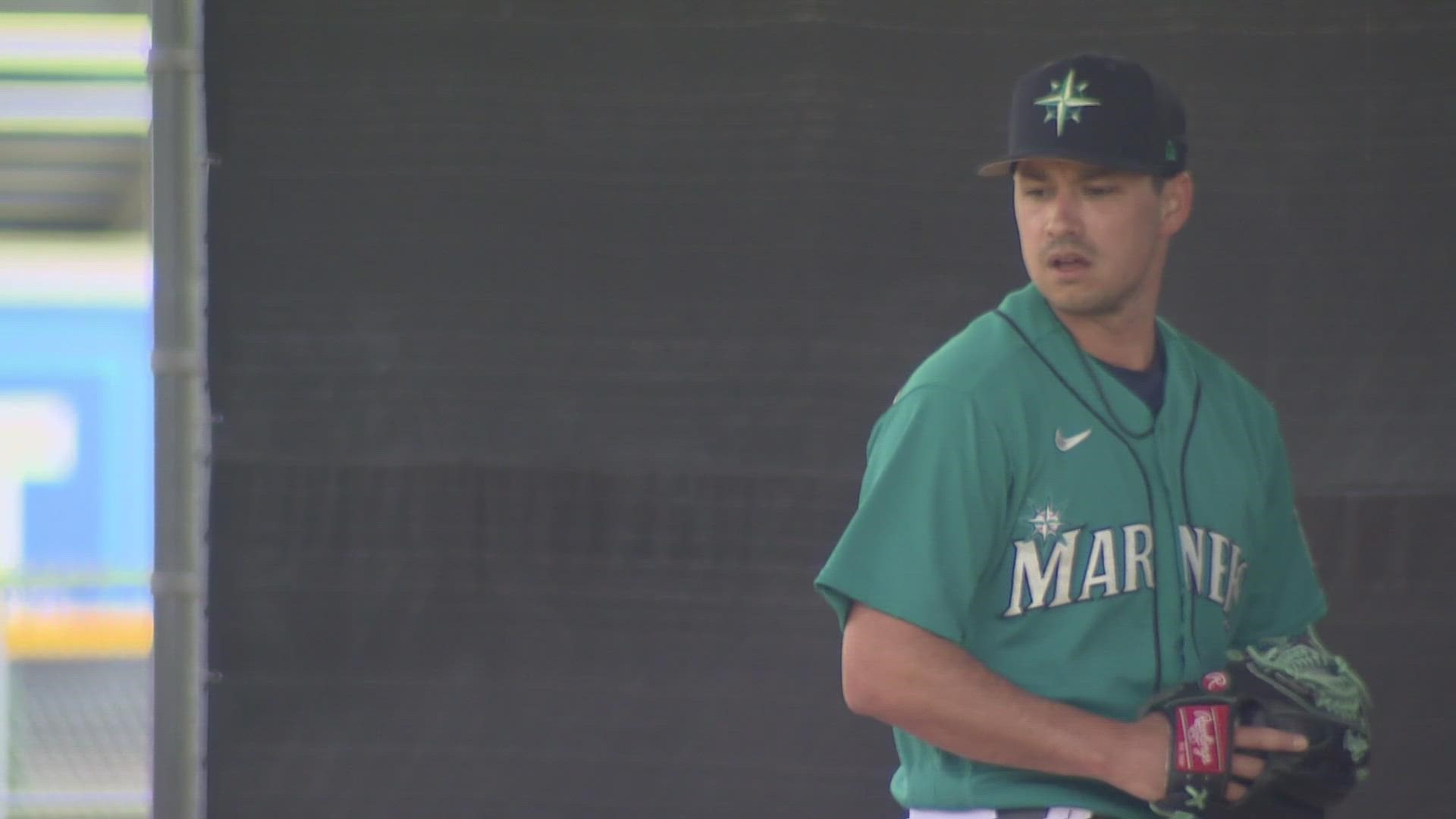PEORIA, Ariz. — As the Seattle Mariners prepare for its season opener Thursday evening, the early results from Major League Baseball's (MLB) three big changes -- pitch clock, bigger bases and shift ban -- are in for spring training.
Mariners games averaged two hours and 34 minutes this spring training, down from the MLB average of three hours and three minutes in last year's spring training. In other words, the pitch clock helped shave 29 minutes off Mariners spring training games this year.
Effective immediately, pitchers will have 15 seconds to begin their throwing motion once the catcher returns the baseball to them. Pitchers will have 20 seconds between pitches if there is a runner(s) on base. Otherwise, the pitchers will be charged with a ball. Batters, on the other hand, must be ready in the batting box with at least eight seconds left on the clock or they'll be charged with a strike.
Stolen bases increased by a tiny margin, from 1.6 in 2022 to 1.7 in 2023, but the success rate was much higher. In 2022, the MLB averaged a 71% success rate on stolen base attempts in spring training, but that number improved to 76% in Mariners spring training games. ESPN said stolen base attempts per game increased to 2.2 per game league-wide this spring training, a noticeable increase from Mariners games.
That could be in part because MLB increased the size of the first, second and third bases from 15 inches to 18 inches. That means the distance from home to first base was decreased by three inches and the distance from third base to home was also decreased by three inches. Bigger bases mean the distance from first base to second base will be shortened by 4.5 inches and the distance from second to third base will be decreased by 4.5 inches.
In theory, MLB said the bigger bases will have a positive impact on player safety and more chances for stolen bases. Injury events near the bases dropped by 13% in the minor leagues last year, according to MLB.
The third big rule change involved banning the shift, which was often used to stymie left-handed hitters. According to ESPN, the batting average on balls in play (BABIP) for left-handed hitters increased from .314 to .327 while remaining nearly identical for right-handed hitters (.311 in 2022, .310 in 2023). Overall, the league-wide BABIP was .317 for all hitters, which is the highest mark in spring training since 2016, according to ESPN. It's early but it does support the notion that eliminating the shift would lead to more hits and more action on the bases.
But did these changes lead to more offense? Not necessarily. Mariners games averaged 9.8 runs per game, down from the MLB average of 10.6 in 2022 spring training. That mirrored the league-wide trend, too (10.2 runs in 2023, down from 10.6 in 2022).
But, still, there is plenty of positives to gleam for a league that was aiming to shorten its game time, improve its pace of play, add more game action and, ultimately, create more offense.
MLB is hitting .667 on its changes thus far. Now the offense just needs to follow suit, too.

